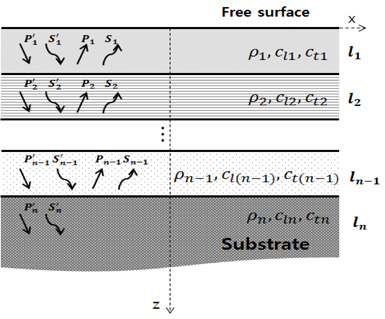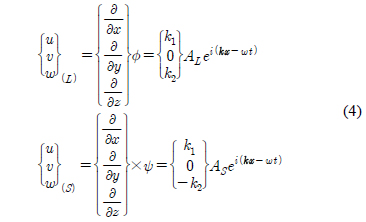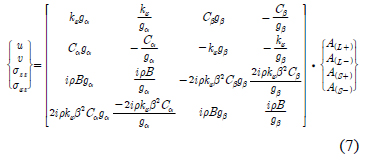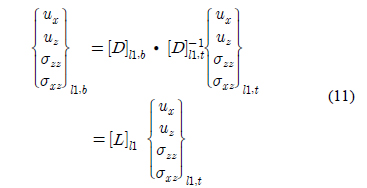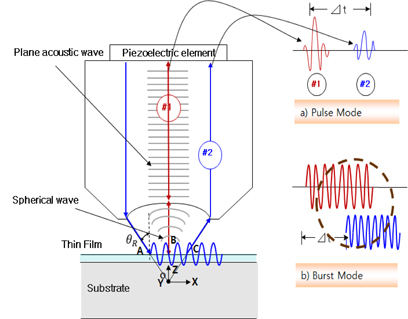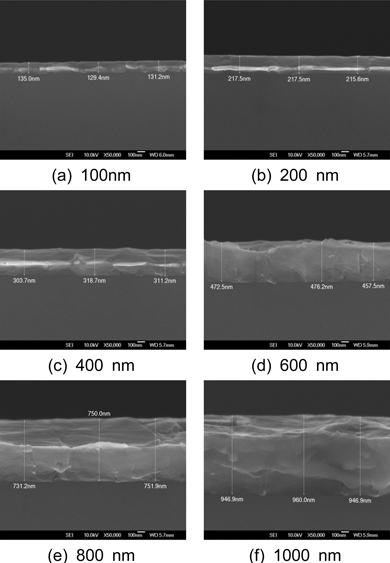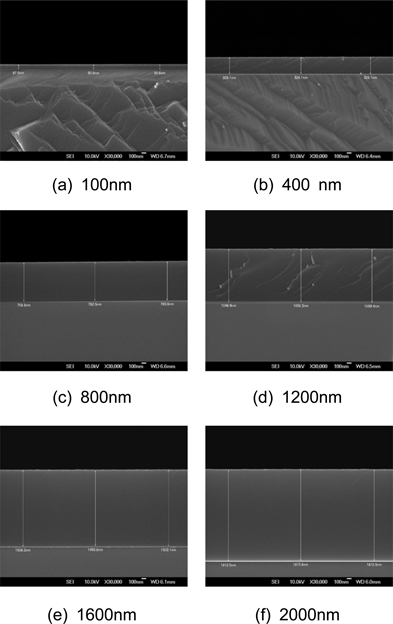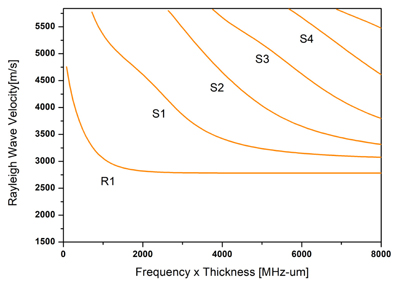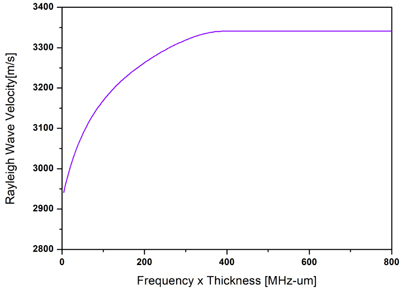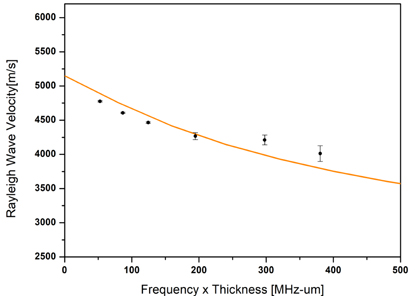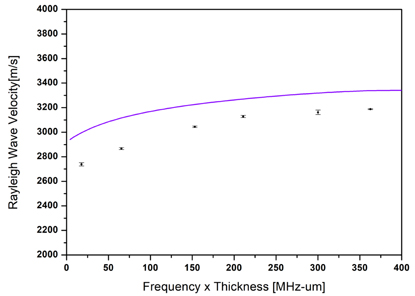As mentioned above, because Rayleigh waves have velocity dispersion in a multilayered
structure, the dispersion characteristics according to the frequency and thin film
thickness were analyzed through a dispersion diagram using the transfer matrix method
[6,7].
The displacement can be expressed in vector form through an analysis of the three-dimensional
wave equation as follows [8]:
where u is the displacement vector in the x, y, or z directions, λ and μ are the Lame’s constants of the material, and ρ is the density of the material. The solutions to Eq. (1) can be divided into equations
for longitudinal and transverse waves, respectively. If the above equation is expressed
by the scalar function ϕ and vector ψ function by the Helmholtz equation, the following equation is obtained [8]:
Furthermore, ϕ and ψ can be expressed as follows:
where k is the wavenumber vector, w is the angular frequency, and x and z are coordinates parallel and perpendicular to the surface, respectively, as shown
in Fig. 1. It is assumed that the component in the y direction does not exist because in Rayleigh waves, only the propagation direction
(x) and the depth direction (z) are considered. Eqs. (1) and (3) can be rearranged with the displacement vectors
for longitudinal and transverse waves as follows, where ux, uy and uz are the displacement vectors in the x, y, and z directions, respectively.
Bulk waves have the same components according to Snell’s law. The wavenumber vector
k is parallel to the medium. The equation for displacement and stress can be represented
by F as follows:
The wavenumber vector for the z direction is as follows, where α and β denote the sound velocities of longitudinal and transverse waves, respectively:
Eq. (6) can be substituted into Eq. (4), and the displacement and stress of the layer
can be rearranged into an equation for the amplitude as follows by omitting the common
component F [4]:
For each layer of the thin film, the downward direction is represented by + and the
upward direction by −. In Eq. (7), Cα, Cβ, gα, gβ and B are random abbreviations for convenience and are defined as follows:
The 4×4 matrix in Eq. (7) can be used to define a coefficient matrix [D] and can be rewritten as follows:
In a multilayered structure of the type shown in Fig. 1, the amplitude vector of the top layer can be expressed as the inverse matrix of
the coefficient matrix [D] as follows:
where the subscript l1 denotes the layer of the sequence, and t denotes the top layer. The relational equation for the top and bottom of the first
layer can be expressed as follows:
where the matrix [L] is a coefficient matrix representing the relationship between the top and bottom
interfaces of a layer. Assuming that the index of the last layer is n, the relationship
between the surface the bottom layer is defined as follows:
where matrix [S] is
In order to solve Eq. (12), the boundary condition for Rayleigh waves must be applied.
The stress components σzz and σxz at the top of the first layer are zero because according to the free stress condition.
As there are no longitudinal and transverse wave components reflected from the half-space,
the amplitude vectors A(L-) and B(S-) are zero. Therefore, the equation for a semiinfinite substrate in free space can
be expressed as follows:
The 0 items in the left term can be removed and rearranged as follows:
For the above equation to be valid, the determinant of matrix [S] must equal 0. This is known as the characteristic equation of the Rayleigh wave.
The dispersion diagram is formed when the frequency and phase velocity satisfying
the above characteristic equation are derived and expressed along the x and y axes,
respectively.
